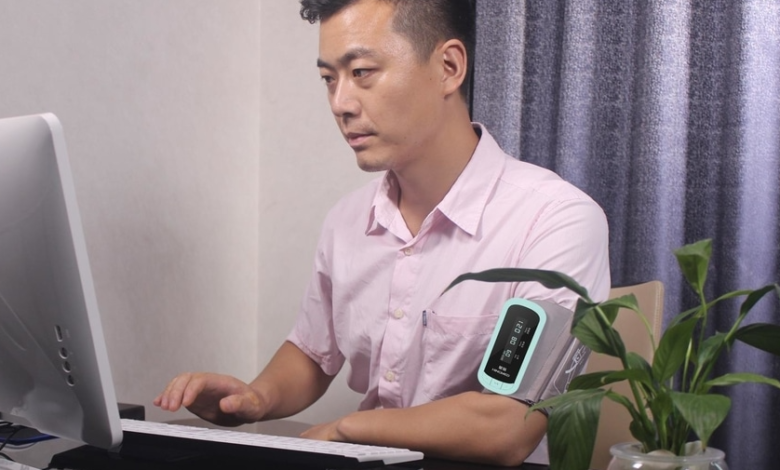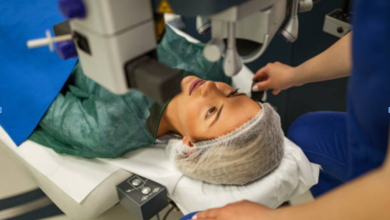Living With Insight: How ABPM Devices and 24-Hour ABPM Are Transforming Blood Pressure Monitoring

In the ever-evolving world of healthcare, knowledge truly is power. This is especially true when it comes to monitoring a condition as common—and as dangerous—as hypertension. High blood pressure, often dubbed the “silent killer,” can go undetected for years, quietly damaging arteries and organs without noticeable symptoms. Fortunately, modern technology has offered a more effective and thorough approach to monitoring this condition: the ABPM device and the process known as 24-hour ABPM.
These two tools are changing the way both doctors and patients understand blood pressure patterns, helping to create more accurate diagnoses and individualized treatment plans. But what exactly are they, how do they work, and why are they gaining so much attention in the medical field? Let’s explore.
What Is an ABPM Device?
An ABPM device, or ambulatory blood pressure monitoring device, is a compact, portable tool that continuously measures a person’s blood pressure over an extended period—typically 24 hours. Unlike traditional blood pressure cuffs used in clinics, this device is worn by the patient throughout the day and night, automatically recording blood pressure readings at regular intervals.
It usually consists of two main components:
- A cuff, worn around the upper arm.
- A small digital monitor, often clipped to a belt or worn over the shoulder.
The ABPM device inflates the cuff at scheduled times—every 15 to 30 minutes during the day and every 30 to 60 minutes at night—recording both systolic and diastolic pressure. All the readings are stored digitally and later analyzed by a healthcare provider.
Understanding 24-Hour ABPM
24-hour ABPM refers to the process of wearing an ABPM device for a full 24-hour period, covering a complete cycle of a patient’s daily activities and rest. This method provides a comprehensive picture of how blood pressure behaves over time, which is something a single reading in a clinical setting simply cannot achieve.
By monitoring throughout the day and night, 24-hour ABPM reveals important patterns:
- Blood pressure fluctuations during daily tasks
- Reactions to stress, exercise, meals, and sleep
- Whether blood pressure “dips” at night, which is typically a healthy response
These insights are invaluable in diagnosing conditions like:
- White coat hypertension: Elevated readings in clinical settings due to stress
- Masked hypertension: Normal readings at the doctor’s office but high readings during daily life
- Nocturnal hypertension: Elevated blood pressure during sleep
See also: Why Private HIV Testing Dubai Is the Smart Choice for Your Health Privacy
The Value of Real-Life Monitoring
One of the major advantages of using an ABPM device for 24-hour ABPM is that it captures blood pressure data in real-life conditions. People go about their regular routines—working, eating, commuting, sleeping—while the device quietly does its job.
This naturalistic approach helps provide more reliable data. Traditional in-office measurements can be misleading, often affected by temporary stress, environmental factors, or even a person’s posture. In contrast, 24-hour monitoring reflects how the cardiovascular system truly functions across a typical day.
This kind of holistic monitoring helps in:
- Making a more accurate diagnosis
- Adjusting medications at the right time of day
- Understanding how lifestyle impacts blood pressure
- Identifying blood pressure patterns that could signal other health issues
How Patients Experience ABPM
Most people find wearing an ABPM device to be relatively easy. After the device is fitted by a healthcare provider, it runs automatically. While the cuff inflating can occasionally disturb sleep or cause minor discomfort, the process is non-invasive and safe.
Patients are usually advised to:
- Keep a diary of activities and sleep during the monitoring period
- Minimize arm movement during inflation
- Avoid intense physical activity
The benefits far outweigh the minor inconvenience. The result is a more detailed, reliable picture of cardiovascular health, without the need for frequent clinical visits.
The Role of 24-Hour ABPM in Treatment Planning
For individuals already diagnosed with hypertension or those at risk, 24-hour ABPM can significantly impact how treatment is designed and monitored. It helps doctors:
- Understand if blood pressure medication is working throughout the day
- Adjust dosages or timing based on daily fluctuations
- Detect spikes that occur outside of clinic hours
- Monitor patients with secondary hypertension, where underlying issues like sleep apnea or kidney problems may be involved
For instance, if a patient’s blood pressure only spikes at night, a physician might prescribe a medication that is more effective during sleeping hours. Conversely, if blood pressure rises during stressful morning hours, the treatment may need to be front-loaded.
This level of precision would not be possible without the data provided by 24-hour ABPM.
A Preventive Approach to a Global Health Issue
Hypertension is a growing health problem worldwide. Millions of people are unaware they have it, and many more don’t manage it effectively. ABPM devices and 24-hour ABPM offer a way to shift from reactive to preventive care.
By identifying high-risk individuals early—before symptoms appear or complications develop—healthcare providers can intervene sooner, potentially avoiding strokes, heart attacks, and chronic kidney disease.
This preventive approach is not only better for the individual but also eases the burden on healthcare systems. By reducing the incidence of hospitalizations and long-term care needs, ABPM monitoring could play a critical role in public health.
Technological Advancements in ABPM Devices
As with most medical devices, ABPM devices are evolving quickly. Modern models are:
- More compact and lightweight
- Quieter and more comfortable during inflation
- Integrated with Bluetooth and mobile apps for easier data transfer
- Compatible with cloud-based platforms for remote monitoring
These innovations are making it even easier for patients and doctors to share information, track progress, and fine-tune treatments—all without stepping into a clinic.
In the future, we may even see ABPM technology combined with AI-powered analytics, allowing for faster and more accurate interpretation of data. This could help flag concerning patterns immediately, reducing wait times for care and catching red flags before they escalate.
Final Thoughts:
In today’s fast-paced world, we often seek quick answers to our health problems. But when it comes to understanding blood pressure—something that can vary so much throughout the day—there’s no shortcut. That’s why tools like the ABPM device and the method of 24-hour ABPM are so important.They give us the full story, not just a single page. They capture the ups and downs, the stress and the calm, the waking and the sleeping—all the moments that define how our hearts are really working.If you’re someone who’s been told you might have high blood pressure, or if you’re on medication but unsure if it’s truly effective, consider speaking to your healthcare provider about 24-hour ABPM. It might be the clearest path yet to taking control of your heart health—for today, and for the long run.




